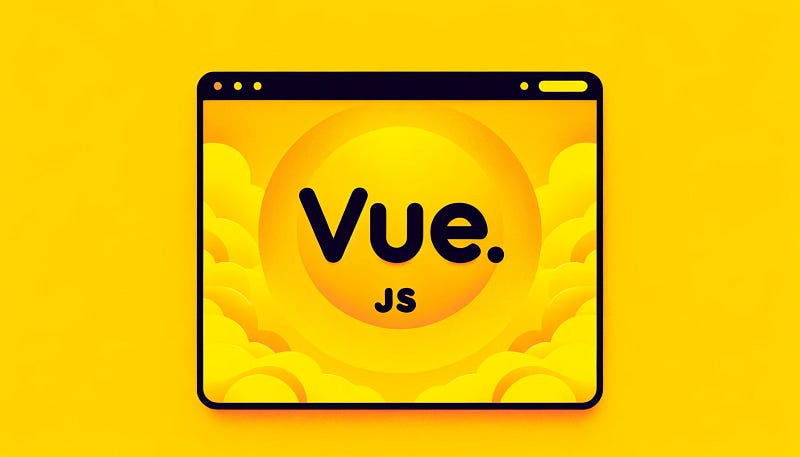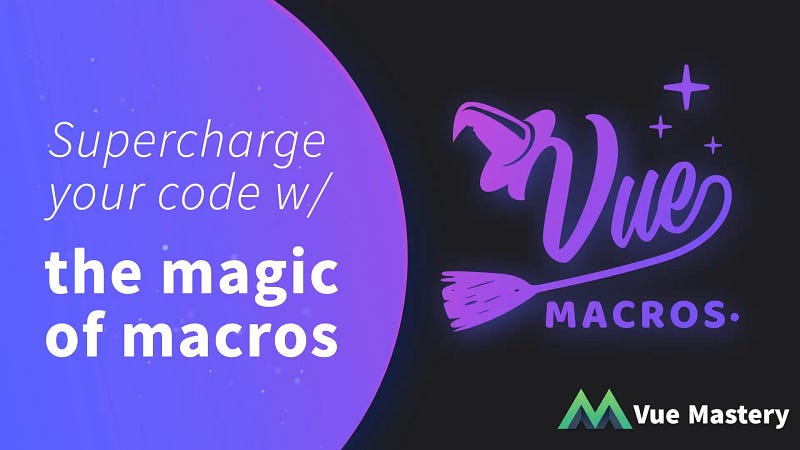Unlocking Advanced Vue.js Features with Macros
Written on
Chapter 1: Introduction to Vue Macros
Vue Macros brings an array of advanced capabilities and syntactic enhancements to Vue.js, which greatly improves the developer experience. By streamlining common coding patterns, these macros allow for more expressive component development. Although these macros are part of a library that includes proposals not yet formally included in Vue, they are designed to expand the framework's functionalities.

In this section, we will delve into the prominent features of Vue Macros, how to set them up, and provide illustrative examples of their application.

Section 1.1: Setting Up Vue Macros
To integrate Vue Macros into your project, begin by installing the library. Depending on your package manager, you can execute one of the following commands:
- For npm: npm install -D unplugin-vue-macros
- For Yarn: yarn add -D unplugin-vue-macros
- For pnpm: pnpm add -D unplugin-vue-macros
Once installed, you need to configure your project to utilize Vue Macros. If you're using Vite as your bundler, you should modify your vite.config.js file like this:
import { defineConfig } from "vite";
import VueMacros from "unplugin-vue-macros/vite";
import Vue from "@vitejs/plugin-vue";
export default defineConfig({
plugins: [
VueMacros({
plugins: {
vue: Vue(),},
}),
],
});
For TypeScript projects, additional adjustments in tsconfig.json are required:
{
"compilerOptions": {
"types": ["unplugin-vue-macros/macros-global"]}
}
Section 1.2: Key Features and Practical Examples
Using `defineOptions`
The defineOptions macro allows developers to declare component options directly within the <script setup> block, removing the necessity for a separate <script> section. This is especially beneficial for those who favor the Composition API but still wish to leverage some features from the Options API.
<script setup lang='ts'>
defineOptions({
name: "SearchComp",
});
</script>
Utilizing `defineModels`
The defineModels macro simplifies the management of two-way data binding between parent and child components, negating the need for props and emits when using v-model.
// In the child component
<script setup lang="ts">
const { modelValue } = defineModels<{ modelValue: Element }>();
</script>
This allows for direct updates to modelValue upon events like button clicks without the hassle of manually managing emits.
Implementing `definePropsRefs`
The definePropsRefs macro enables destructuring of props while retaining their reactivity, a highly sought feature among developers.
const { showModal, inputValue } = definePropsRefs({
showModal: Boolean,
inputValue: String,
});
This macro is particularly advantageous when needing easy access to destructured props while ensuring they remain reactive.
Defining Emits with `defineEmit`
The defineEmit macro streamlines the process of declaring emits, allowing for individual emits to be defined directly.
<script setup>
const foo = defineEmit<number[]>('foo');
const bar = defineEmit<string[]>();
foo(10);
bar('test');
</script>
This macro clarifies the syntax for emits, making it more concise and easier to understand.
Summary
Incorporating Vue Macros significantly enhances the development experience within Vue.js by introducing useful syntactic sugar and features that simplify common coding patterns. By leveraging Vue Macros in your projects, you can write cleaner and more expressive code, leading to improved development efficiency and code maintainability. However, it’s essential to remember that some of these features are still experimental and should be used cautiously in production settings.
Chapter 2: Video Tutorials
This video tutorial, "Vue 3 All-in-One Tutorial Series (3 Hours!)", provides an extensive overview of Vue.js, covering essential concepts and practical examples.
In "Advanced Vue.js Component Design - Adam Wathan", you will learn advanced techniques for designing Vue components effectively.